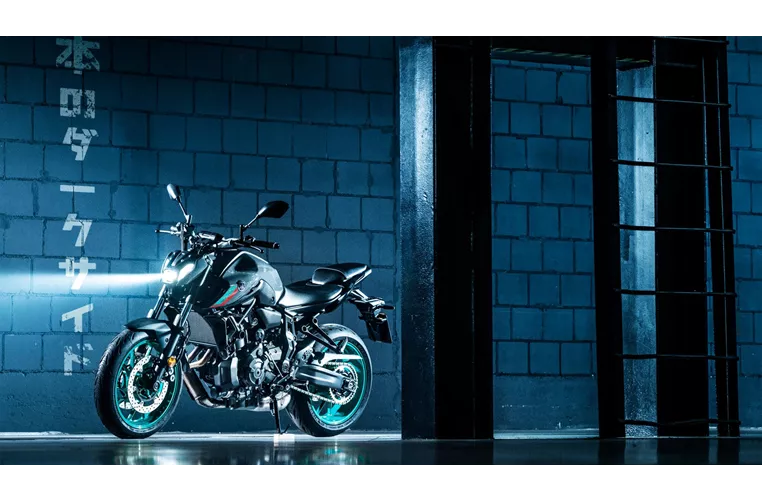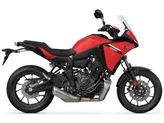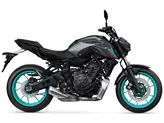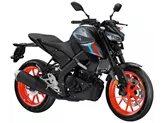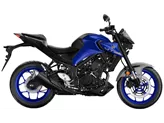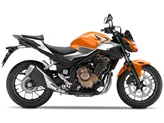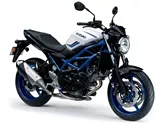Suzuki SV 650 2017 vs. Yamaha MT-07 2022

Suzuki SV 650 2017
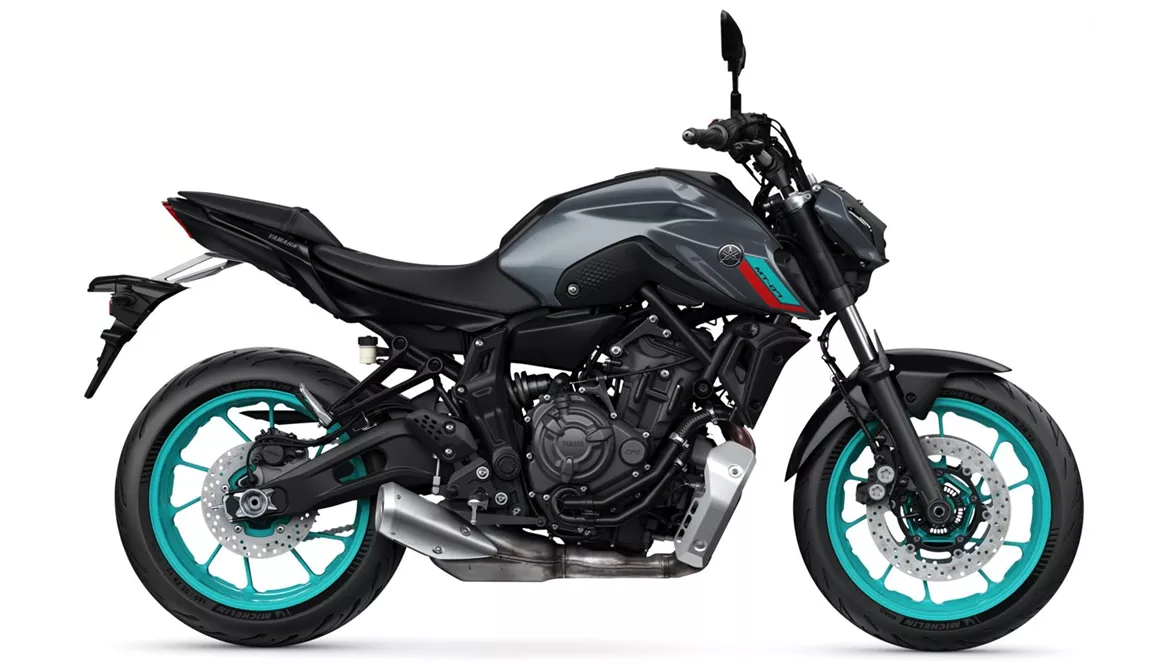
Yamaha MT-07 2022
Vue d’ensemble - Suzuki SV 650 2017 vs Yamaha MT-07 2022
The Suzuki SV 650 model year 2017 and the Yamaha MT-07 model year 2022 are both popular naked bikes that offer a thrilling riding experience. While they have some similarities in terms of engine type, fuel system, and suspension, there are also notable differences in their specifications and features.
Starting with the engine and drive train, both bikes have a 2-cylinder liquid-cooled engine with fuel injection. The Suzuki SV 650 2017 has a V-type engine with a displacement of 645cc, delivering 76 horsepower and 64 Nm of torque. On the other hand, the Yamaha MT-07 2022 features an in-line engine with a displacement of 689cc, producing slightly lower power at 73.4 horsepower but higher torque at 67 Nm. Both bikes provide a smooth and responsive performance, but the Yamaha MT-07 2022 may offer a livelier and more powerful engine.
In terms of suspension, both bikes feature a telescopic fork at the front and a swing arm with a monoshock at the rear. This setup provides a good balance between comfort and handling. However, it is worth noting that the Yamaha MT-07 2022 does not have an adjustable chassis, which may limit customization options for some riders.

Suzuki SV 650 2017
Both bikes have a steel frame, ensuring stability and durability. The braking system on both models consists of double disc brakes at the front, but the Yamaha MT-07 2022 has slightly larger diameter discs at 298mm compared to the 290mm on the Suzuki SV 650 2017. This may result in improved braking performance and better stopping power on the Yamaha.
In terms of dimensions and weights, the Yamaha MT-07 2022 has a slightly shorter wheelbase at 1400mm compared to the 1445mm of the Suzuki SV 650 2017. The seat height is also higher on the Yamaha at 805mm compared to 785mm on the Suzuki. However, the Yamaha is lighter with a kerb weight of 184kg, while the Suzuki weighs 197kg with ABS. Both bikes have a similar fuel tank capacity, with the Yamaha offering a slightly larger capacity at 14 liters compared to the 13.8 liters of the Suzuki.
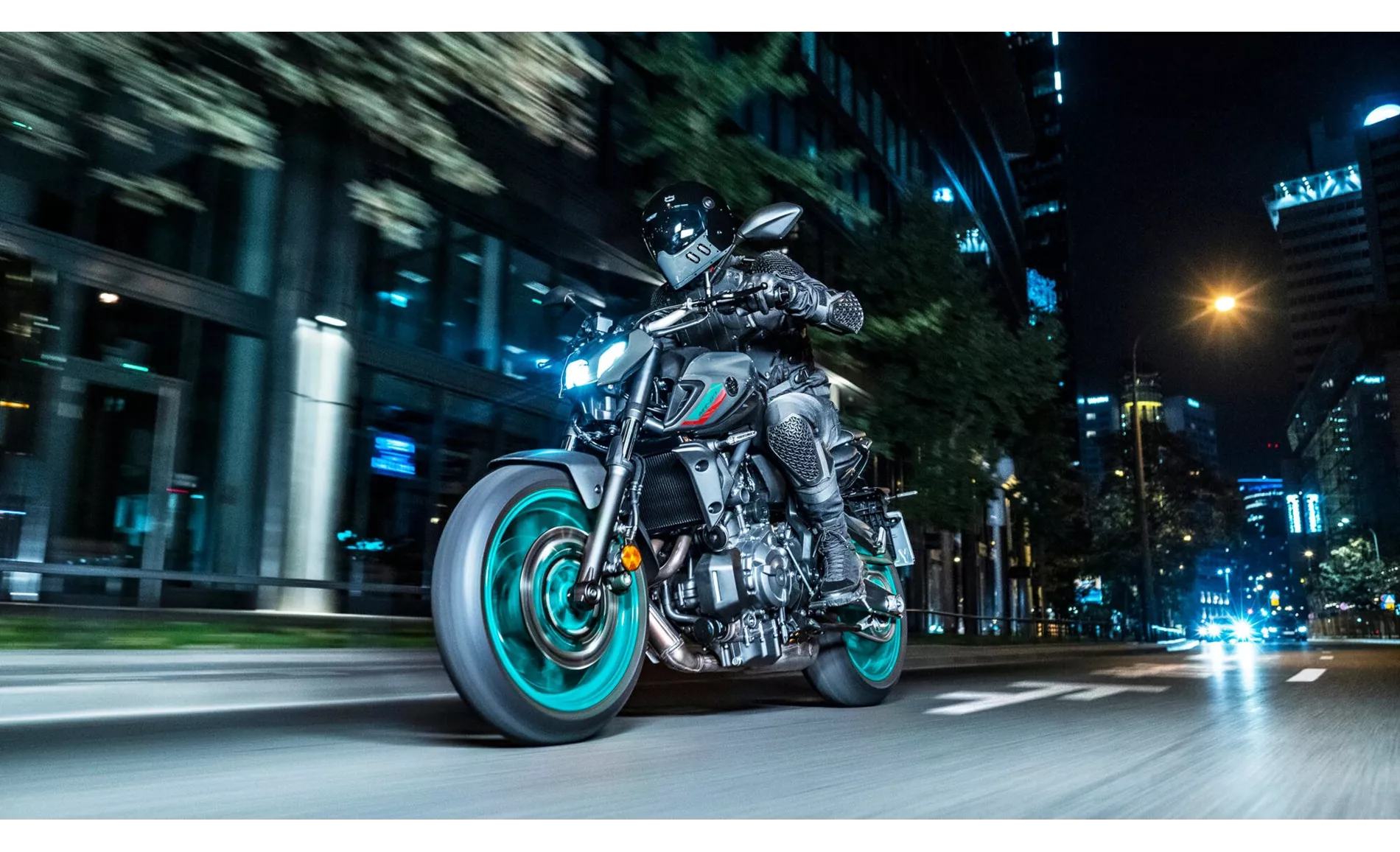
Yamaha MT-07 2022
Moving on to the strengths of each bike, the Suzuki SV 650 2017 is praised for its smooth engine, playful handling, and great chassis. It offers a fun and agile riding experience, making it suitable for both beginners and experienced riders. On the other hand, the Yamaha MT-07 2022 is known for its lively and powerful engine, providing a thrilling acceleration. It also has a comfortable seating position, good braking system, and easy-to-read instruments.
However, both bikes have their weaknesses as well. The Suzuki SV 650 2017 is criticized for having weak brakes, which may require some riders to upgrade for better stopping power. On the other hand, the Yamaha MT-07 2022 lacks an adjustable chassis, limiting customization options for riders who prefer to fine-tune their bike's handling. Additionally, the Yamaha does not have a TFT display, which may be a drawback for riders who prefer a more modern and advanced instrument cluster.
In conclusion, both the Suzuki SV 650 2017 and the Yamaha MT-07 2022 are impressive naked bikes that offer a thrilling riding experience. While they have some similarities in terms of engine type, suspension, and frame, they also have notable differences in specifications and features. Ultimately, the choice between the two will depend on the rider's preferences and priorities, whether it be a smoother engine, adjustable chassis, or advanced instrument cluster.
Caractéristiques techniques Suzuki SV 650 2017 par rapport à Yamaha MT-07 2022
Avantages et inconvénients en comparaison
Avantages et inconvénients en comparaison
Suzuki SV 650 2017

La Suzuki SV 650 est accompagnée d'une longue histoire pleine de succès, qui durera certainement encore longtemps. Son V2 souple convainc par sa réactivité très douce et son couple élevé. Ses dimensions compactes contribuent à donner à la moto un aspect très compact. Cela conviendra parfaitement aux débutants. Le châssis marque également des points avec une maniabilité ludique. Malheureusement, le freinage n'est pas à la hauteur de ce que l'on attend d'un véhicule aussi puissant.
Yamaha MT-07 2022
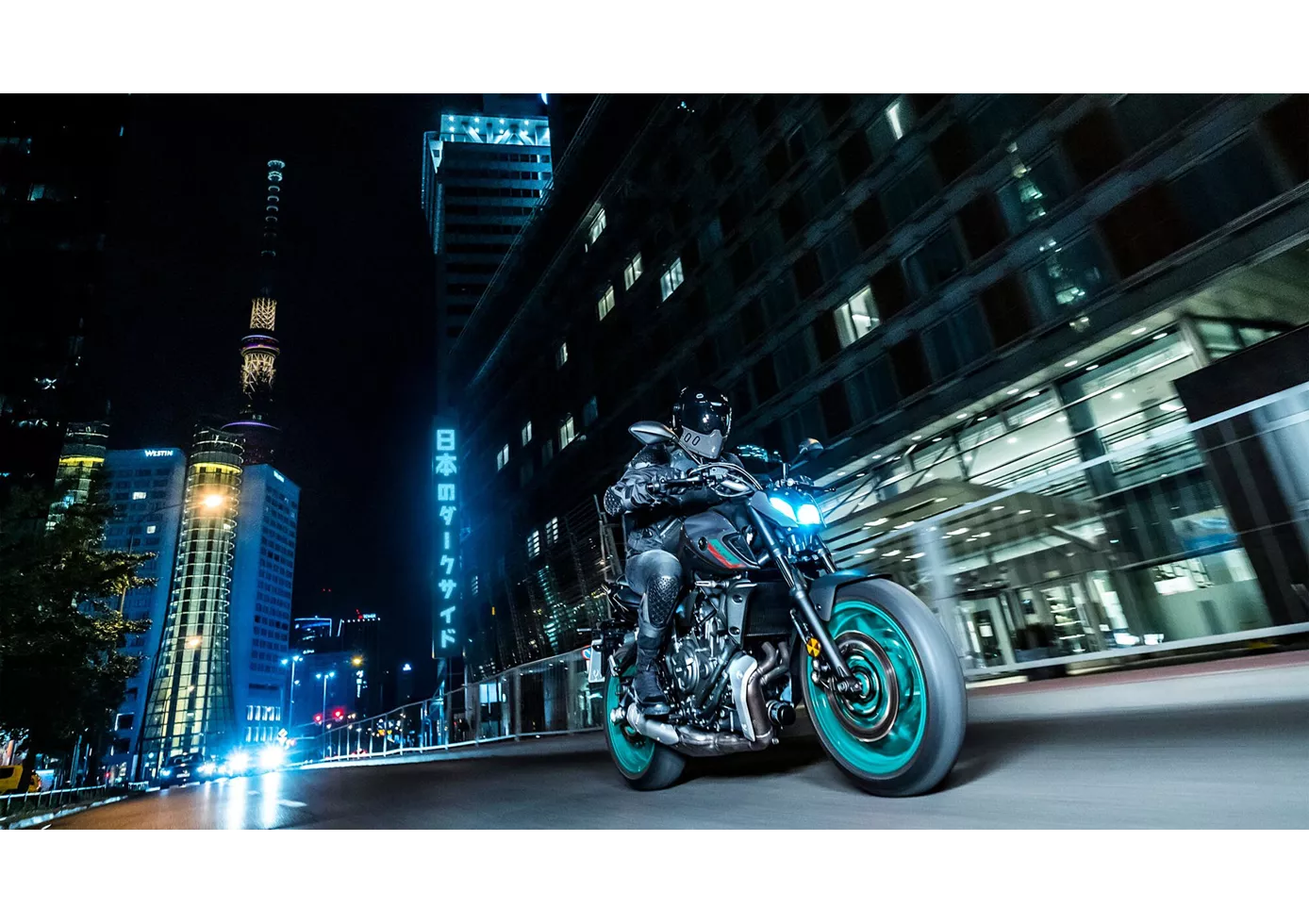
Peu de motos de la catégorie dite d'entrée de gamme procurent autant de plaisir que la Yamaha MT-07. Même la version bridée à 48 ch peut, grâce à sa cylindrée relativement importante, tenir plus longtemps que l'on ne pourrait le supposer face à la version complète. Les autres composants s'en sortent également bien, tant les freins que le châssis ne veulent effrayer personne avec trop de dureté, mais n'atteignent pas immédiatement leurs limites, même pour les pilotes les plus sportifs. L'optique est désormais plus cohérente, le phare à LED minimaliste s'accorde parfaitement avec le look anguleux.
Comparaison des prix Prix moyen du marché Suzuki SV 650 vs Yamaha MT-07
There are a few key differences between a Suzuki SV 650 2017 and a Yamaha MT-07 2022. In terms of price, the actual average price of a Yamaha MT-07 2022 is about 26% higher. Compared to Yamaha MT-07 2022 there are less Suzuki SV 650 2017 bikes available on the 1000PS.de Marketplace, specifically 6 compared to 52. It takes less time to sell a Yamaha MT-07 with 109 days compared to 112 days for the Suzuki SV 650. Since model year 2005 1000PS.de editors have written 25 reviews for the Suzuki SV 650 and 69 reviews for the Yamaha MT-07 since model year 2013. The first review for the Suzuki SV 650 was published on 9/26/2008 and now has more than 14,200 views. This compares to more than 12,600 views for the first review on Yamaha MT-07 published on 11/4/2013.

